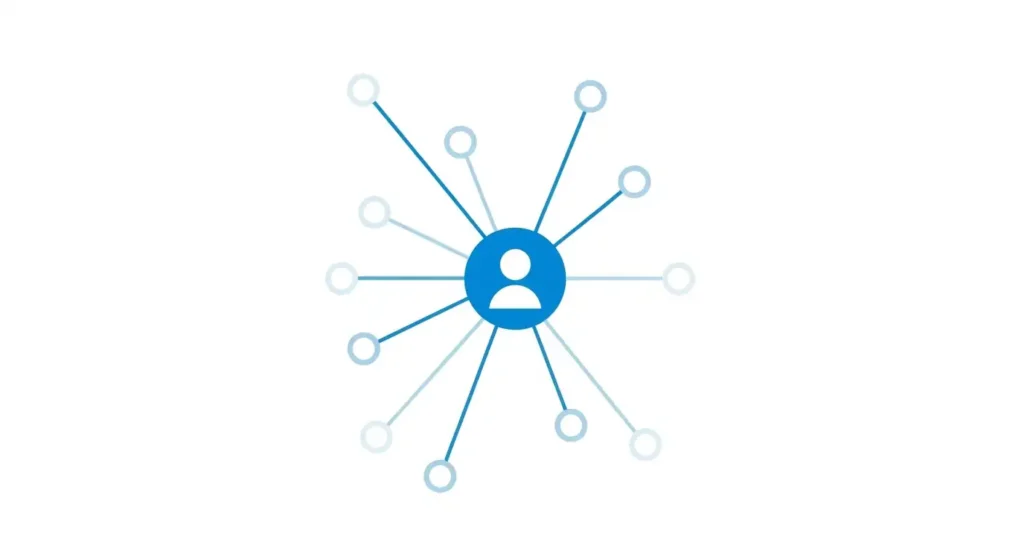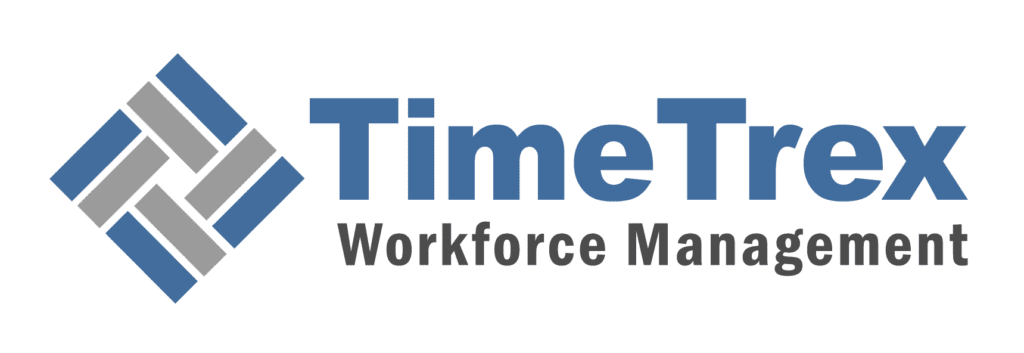
The Strength of Weak Ties in the Modern Labor Market
In the complex world of professional networking and job seeking, a groundbreaking concept revolutionized our understanding of career mobility: the strength of weak ties. This theory suggests that our casual acquaintances, not our close friends, are often the most powerful source of new job opportunities. This article provides a comprehensive analysis of the strength of weak ties, exploring its origins with Mark Granovetter, its validation in the digital age through platforms like LinkedIn, and actionable strategies for leveraging this powerful principle in today's labor market. Understanding how weak ties function is critical for any job seeker aiming to maximize their career potential.
TL;DR
- Weak Ties Are More Valuable for New Job Info: Your acquaintances (weak ties) provide more novel and non-redundant job opportunities than your close friends (strong ties) because they connect you to different social and informational circles.
- The "Sweet Spot" is Moderately Weak Ties: Massive experiments on LinkedIn showed the most effective connections are "moderately weak ties"—people you share about 10 mutual contacts with. They balance novelty with relevance.
- Industry Matters: Weak ties are most powerful in fast-moving, high-tech industries where new information is key. Strong ties are more valuable in traditional sectors where deep trust and vetting are paramount.
- Strong Ties Still Matter: Strong ties are crucial for emotional support, high-trust recommendations, and help during urgent job searches. A balanced strategy uses both.
- Be Intentional, Especially in a Remote World: With remote work reducing spontaneous interactions, you must actively and strategically cultivate weak ties through digital platforms and diverse events to maintain a competitive edge in the labor market.
Article Index
- The Granovetter Revolution: From Sociological Theory to Labor Market Cornerstone
- The Architecture of Opportunity: Mechanisms of Weak Ties in Job Transmission
- Causal Validation in the Digital Age: The LinkedIn Experiments
- Nuances and Contingencies: Refining the Weak Tie Hypothesis
- The Enduring Role of Strong Ties: Context, Security, and Support
- Critiques and Theoretical Boundaries: A Scholarly Interrogation
- Strategic Network Cultivation: An Actionable Framework for the Modern Job Seeker
- The Future of Connectivity: Weak Ties in the Age of AI and Remote Work
The Granovetter Revolution: From Sociological Theory to Labor Market Cornerstone
The study of social networks and their influence on economic outcomes was fundamentally altered by the publication of a single, counter-intuitive paper in 1973. Mark Granovetter's "The Strength of Weak Ties" proposed a radical thesis: in the pursuit of opportunities, particularly in the labor market, our casual acquaintances are often more valuable than our close friends. This idea, which initially faced rejection from the academic establishment, has since become one of the most influential and widely cited works in the social sciences, forming a critical bridge between the micro-level interactions of individuals and the macro-level patterns of social and economic life.
The Genesis of a Groundbreaking Idea
The intellectual climate of the 1970s in sociology was heavily focused on the power of strong, cohesive groups. Granovetter’s work, which originated as part of his doctoral dissertation at Harvard University, challenged this consensus directly. His paper's enduring appeal lies in its elegant ability to link micro-processes to macro patterns, yielding a provocative and non-obvious prediction about the world. It offered a tool for understanding how small-scale interactions could translate into large-scale phenomena like social mobility and information diffusion, with the job market serving as its most compelling case study.
Defining the Spectrum of Social Ties
To build his theory, Granovetter first needed to formalize relationship intensity. He proposed that the strength of a tie is a composite of time, emotional intensity, intimacy, and reciprocal services. This creates a spectrum:
Strong Ties
- Close friends & family
- Frequent contact
- High trust & emotional bond
- Share similar information
Weak Ties
- Acquaintances
- Infrequent contact
- Lower time commitment
- Provide novel information
The Core Hypothesis: Tie Strength and Network Overlap
The engine of Granovetter's argument is that the stronger the tie between two people, the more their social circles will overlap. Our close friends are highly likely to also be friends with each other, while our acquaintances are not. This process ensures that the social world of strong ties is characterized by high levels of network overlap and redundancy.
The "Forbidden Triad" as a Micro-Mechanism
Granovetter used the concept of triadic closure, explained by the "forbidden triad," to show how networks become dense. A triad is unstable if Person A has a strong tie to Person B and Person C, but B and C have no tie between them. The social and psychological pressure encourages B and C to form a connection, closing the triad. This micro-level mechanism drives the formation of cohesive cliques around strong ties, which makes them informationally isolated from the outside world. It is this structural gap that weak ties are uniquely positioned to bridge.
The Architecture of Opportunity: Mechanisms of Weak Ties in Job Transmission
Having established that strong ties create dense, isolated clusters, Granovetter's work then explains the powerful role of weak ties. They are not merely less intense relationships; they are the architectural elements that connect disparate parts of the social universe, forming the very pathways through which opportunity travels.
How People Find New Jobs
Networking is the single most effective channel for securing a new role, far outpacing other common methods. Data shows that connections made through weaker ties are disproportionately responsible for these successful placements.
Weak Ties as "Social Bridges"
The central mechanism behind the power of weak ties is their function as "bridges" in a social network—a tie that provides the only path between two distinct clusters of people. Granovetter powerfully hypothesized that all bridges are weak ties. A strong tie cannot be a bridge because the mechanism of triadic closure would inevitably merge the two clusters it was supposed to connect. Therefore, only a weak tie can sustainably connect two otherwise disconnected social worlds.
The Value of Novel, Non-Redundant Information
The structural role of weak ties as bridges is directly linked to their primary economic function: the transmission of novel, non-redundant information. Within a close-knit group of strong ties, information is largely homogenous and redundant. Weak ties, in contrast, derive their power from connecting to different social worlds. When a weak tie passes along information about a job opening, it is likely to be a unique opportunity the job seeker and their entire circle of close friends would have otherwise never encountered.
Empirical Evidence from Early Studies
Granovetter’s original research surveyed 282 professionals who had recently changed jobs. The results provided powerful support for his theory. Only 16.7% found their job via a contact they saw "often" (strong tie). A majority, 55.6%, saw their contact "occasionally," and 27.8% saw them "rarely." The overwhelming conclusion was that job seekers were far more likely to get their job through individuals with whom they had weaker connections. While strong ties offer comfort and support (bonding capital), weak ties offer discovery and new opportunities (bridging capital).
Causal Validation in the Digital Age: The LinkedIn Experiments
For nearly five decades, the "Strength of Weak Ties" theory was primarily supported by correlational studies. This changed dramatically with a landmark series of experiments on LinkedIn's platform, conducted by researchers from MIT, Harvard, Stanford, and LinkedIn itself. This research provided the first large-scale, causal validation of Granovetter's theory.
Research at Scale: A New Era of Evidence
The scale of the LinkedIn study was unprecedented, running for five years and involving over 20 million users, 2 billion new ties, and 600,000 job changes. By randomly tweaking LinkedIn's "People You May Know" algorithm to favor either stronger or weaker ties for different user groups, researchers could isolate the causal effect of forming different types of connections on job mobility.
The Headline Finding: Weak Ties Causally Increase Job Mobility
The primary result was a clear and powerful confirmation of Granovetter's hypothesis. The analysis revealed that weaker social connections have a greater beneficial effect on job mobility than stronger ties. It proved that the 50-year-old theory was not just an artifact of a pre-digital era but a fundamental principle that holds true on the world's largest professional network.
The "Inverted U-Shape": Introducing Moderately Weak Ties
While the study confirmed the overall theory, it also introduced a critical refinement: the relationship between tie strength and job mobility is not linear but follows an "inverted U-shaped" curve. This means there is a "sweet spot." The strongest ties were least helpful, but the very weakest ties were also not the most effective. The greatest benefit came from moderately weak ties—connections with whom a user shared around ten mutual friends. These ties are weak enough to bridge into new information circles but strong enough to provide relevant and useful information.
Effectiveness of Ties in Job Mobility
A groundbreaking 2022 study of 20 million LinkedIn users confirmed Granovetter's theory, finding a clear "sweet spot" in tie strength for maximizing job mobility.
| Finding/Hypothesis | Metric Used | Key Result | Implication for Job Seekers |
|---|---|---|---|
| Overall Causal Effect | Tie formation randomized by the "People You May Know" algorithm | Weaker ties causally increase job transmissions more than strong ties. | Proactively cultivate acquaintances outside your immediate circle. |
| The "Sweet Spot" (Structural Strength) | Number of mutual connections between two users | An "inverted U-shape" relationship exists. Peak effectiveness is at moderately weak ties (~10 mutual connections). | Target connections who share some professional context but are not close colleagues. |
| Interaction Intensity | Frequency of messages exchanged between two users | A more linear relationship was observed. The least interaction correlated with the most job transmissions. | Do not discount connections with whom you rarely communicate; their value is structural. |
| Industry Variation | Economic sector (Digital vs. Non-Digital) | Weak ties are most effective in digital/high-tech industries. Strong ties are more effective in traditional industries. | Tailor your networking strategy to your industry's "information velocity." |
Nuances and Contingencies: Refining the Weak Tie Hypothesis
The power of the "Strength of Weak Ties" (SWT) theory is not uniform. Its effectiveness is contingent upon several key factors, including industry, the nature of the tie, and the job seeker's demographic profile. A sophisticated understanding requires moving beyond the general principle to appreciate these crucial nuances.
Industry as a Key Moderator
The LinkedIn experiments revealed that weak ties create significantly more mobility in digital and high-tech sectors. In these rapidly evolving fields, the constant need for novel information places a premium on the "discovery" function of weak ties. Conversely, strong ties were more beneficial in less digital, more traditional industries, where deep-seated trust and personal vetting are more critical than novel information. This suggests an "information velocity hypothesis": the faster information changes in an industry, the more valuable weak ties become.
Deconstructing "Tie Strength": Structure vs. Interaction
The LinkedIn study effectively "unbundled" tie strength into two components with different effects. Structural weakness (few mutual contacts) produced the inverted U-shape, showing moderately weak ties are best. Interactional weakness (infrequent communication) showed a more linear relationship, where the least interaction correlated with the most job transmissions. This means the ideal contact is structurally diverse but requires low maintenance.
Demographic and Positional Variations
The effectiveness of weak ties also depends on an individual's position. For women and racial minorities, weak ties can be vital bridges into majority-group networks where opportunities are often concentrated. They are also especially beneficial for young workers seeking to establish a stable early career path. Finally, a weak tie to someone of higher occupational status is often more valuable, providing not just information but a potential channel for upward mobility.
The Enduring Role of Strong Ties: Context, Security, and Support
An oversimplified interpretation can lead to the erroneous conclusion that "weak ties are always better." Strong ties remain indispensable, performing critical functions that weak ties cannot, especially in situations of high risk or when deep trust is required.
Strong Ties in Times of Urgency and Insecurity
Research indicates that individuals facing high levels of insecurity, such as unemployment, are more likely to rely on their strong ties. A close friend or mentor feels a greater sense of obligation to help and is more likely to invest significant time and effort. This is a lower-risk, lower-reward strategy, providing dependable support when it's needed most.
The Function of Trust and High-Bandwidth Transfer
While weak ties are excellent for simple information (like a job posting), they are less effective at transmitting complex, nuanced knowledge. Strong ties offer a high-"bandwidth" channel for conveying subtle information about a candidate's character, work ethic, and cultural fit. A personal, heartfelt recommendation from a trusted former manager can be far more powerful than a simple lead from a casual acquaintance.
Strong Ties as a Gateway to High-Status Networks
For early-career professionals, a strong tie to a mentor can serve as a critical gateway to professional networks. This strong tie acts as a validator, lending their established credibility to the job seeker and making high-trust introductions. This suggests a lifecycle model of networking, where reliance on strong versus weak ties evolves over a career.
Critiques and Theoretical Boundaries: A Scholarly Interrogation
Despite its influence, the "Strength of Weak Ties" theory is not without its critics. These scholarly interrogations refine its claims and define the boundaries of its applicability, suggesting it is a powerful, contingent theory rather than a universal law.
Questioning the Core Assumptions
Some critiques challenge the claim that "no strong tie is a bridge," showing that in certain network configurations, they can be. Others have found that the "forbidden triad" is less absolute than proposed, as open triads can persist in real-world networks. When these core assumptions are violated, the special utility of weak ties diminishes.
The Diversity-Bandwidth Trade-off
A significant critique argues the theory overemphasizes network diversity (from weak ties) while underestimating "bandwidth" (from strong ties). Weak ties offer high diversity but low bandwidth (good for simple facts). Strong ties offer low diversity but high bandwidth (better for complex advice). The relative value of each depends on the informational context and the resource being sought.
From Structure to Agency: The Role of the Actor
Perhaps the most fundamental critique is that the SWT theory presents an "overstructured" view of human action, downplaying individual agency. A structurally advantageous weak tie is worthless if the job seeker lacks the skill or confidence to activate it. Agency—the way people intentionally use their ties—is a critical, and perhaps under-theorized, component of the equation.
Strategic Network Cultivation: An Actionable Framework for the Modern Job Seeker
The rich body of work on weak ties can be distilled into a practical playbook for career management. Strategically managing one's social network is no longer a soft skill but a core competency.
How to Leverage Your Weak Ties
1. Reconnect Periodically
Check in with former colleagues or classmates. A simple "hello" or comment on a post keeps the connection warm.
2. Be Specific In Your Ask
Instead of "Do you know of any jobs?", ask "Do you know anyone in the marketing department at Company X?"
3. Offer Value First
Share a relevant article or offer a helpful introduction. Give before you ask to strengthen the relationship.
4. Attend Industry Events
Conferences and meetups (both virtual and in-person) are fertile ground for cultivating new weak ties.
The Future of Connectivity: Weak Ties in the Age of AI and Remote Work
The principles of the "Strength of Weak Ties" theory are being tested and transformed by profound shifts in the world of work. The rise of remote work and artificial intelligence will not make network theory obsolete but will amplify its importance.
The Challenge of Remote Work
The widespread adoption of remote work poses a significant threat to the organic formation of weak ties. The informal, spontaneous "water cooler" conversations of a physical office are their primary breeding ground. Research from MIT found the shift to remote work led to a 38% decline in the formation of weak ties, correlated with a decrease in innovative work. In a remote-first world, cultivating weak ties must become a conscious and intentional activity.
AI in Recruitment and Networking
AI is a double-edged sword. On one hand, AI-driven recruitment tools that screen candidates based on keywords could devalue the human element of networking. On the other, AI could become a powerful tool for leveraging weak ties, analyzing a user's network to identify the highest-potential connections and suggest engagement strategies. However, human networks will likely remain the primary channel for vetting crucial soft skills like cultural fit and character.
Weak Ties in the Gig Economy
For the growing segment of the workforce in the gig economy—freelancers and contractors—a diverse network of weak ties is the fundamental business model. Their professional survival depends on continuously bridging into new client clusters to secure their next project. The "Strength of Weak Ties" theory is, in essence, the foundational operating manual for a successful freelance career.
The Digitized Labor Market
Ultimately, these trends point toward a labor market where algorithms and network structures are the invisible architects of opportunity. This creates an "intentionality imperative." In the future of work, building and maintaining the vital asset of weak ties will require conscious, strategic, and continuous effort. Those who intentionally apply these principles will enhance their mobility and career resilience, while those who fail to adapt may see their networks shrink, limiting their opportunities and reinforcing the very social fragmentation Granovetter's theory so powerfully described half a century ago.
Build a Stronger, More Connected Team
Just as a strong network is vital for individual careers, a well-managed and connected workforce is the backbone of any successful business. TimeTrex provides powerful Human Resource Management tools to help you build, support, and retain your most valuable asset—your people.
Explore TimeTrex HR FeaturesDisclaimer: The content provided on this webpage is for informational purposes only and is not intended to be a substitute for professional advice. While we strive to ensure the accuracy and timeliness of the information presented here, the details may change over time or vary in different jurisdictions. Therefore, we do not guarantee the completeness, reliability, or absolute accuracy of this information. The information on this page should not be used as a basis for making legal, financial, or any other key decisions. We strongly advise consulting with a qualified professional or expert in the relevant field for specific advice, guidance, or services. By using this webpage, you acknowledge that the information is offered “as is” and that we are not liable for any errors, omissions, or inaccuracies in the content, nor for any actions taken based on the information provided. We shall not be held liable for any direct, indirect, incidental, consequential, or punitive damages arising out of your access to, use of, or reliance on any content on this page.
About The Author

Roger Wood
With a Baccalaureate of Science and advanced studies in business, Roger has successfully managed businesses across five continents. His extensive global experience and strategic insights contribute significantly to the success of TimeTrex. His expertise and dedication ensure we deliver top-notch solutions to our clients around the world.
Time To Clock-In
Start your 30-day free trial!
Experience the Ultimate Workforce Solution and Revolutionize Your Business Today
- Eliminate Errors
- Simple & Easy To Use
- Real-time Reporting

Saving businesses time and money through better workforce management since 2003.
Copyright © 2025 TimeTrex. All Rights Reserved.
